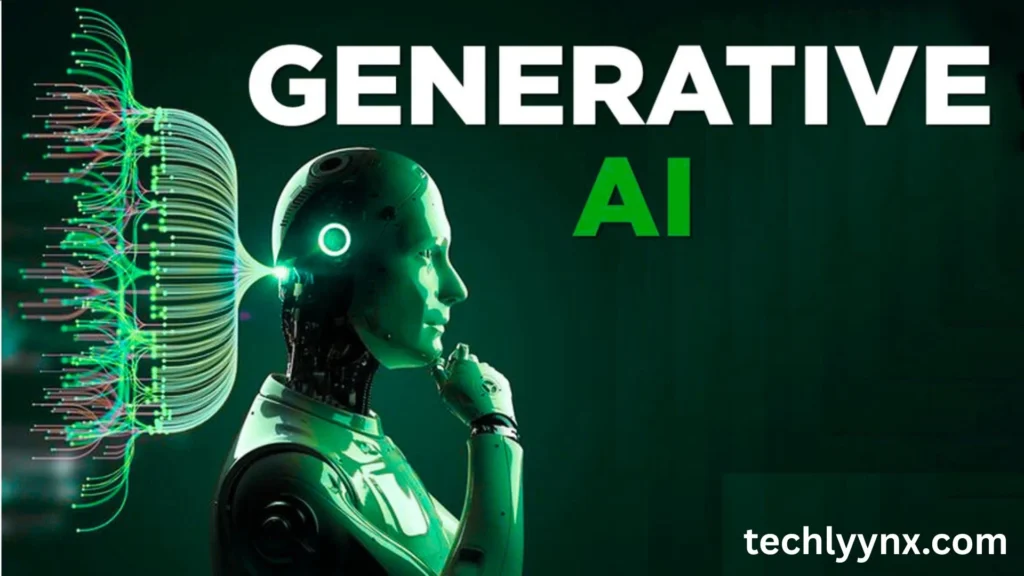Generative AI is one of the most exciting and talked-about technologies today. It’s changing how we work, communicate, create art, and even how we think about the future. But what exactly is this, and why is it getting so much attention? Let’s break it down in simple words.
What Is Generative AI?
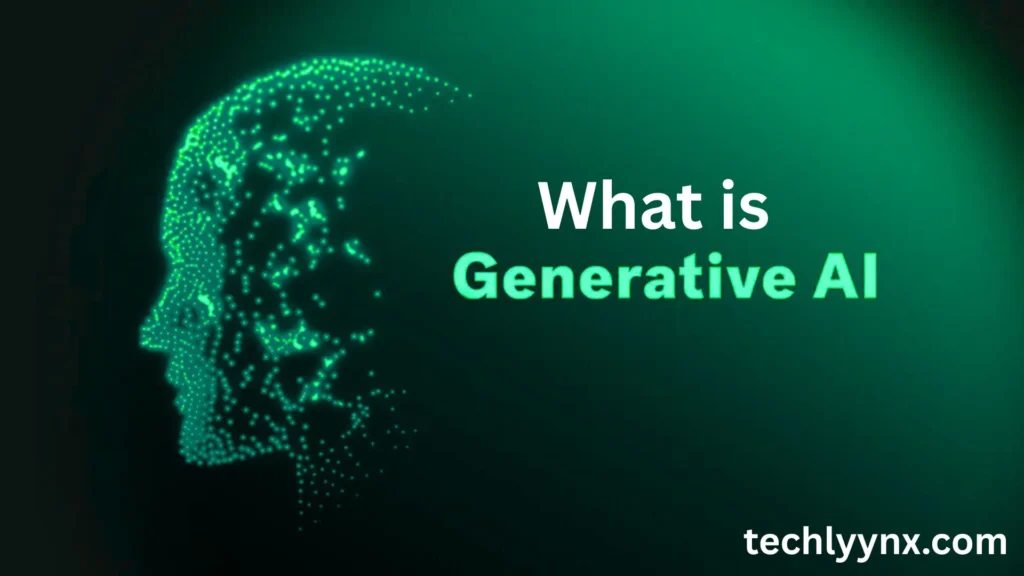
One kind of artificial intelligence that can produce new things is called generative AI. These “things” could be computer code, pictures, videos, music, text, or even three-dimensional creations. In order to create original material that appears to have been created by a person, it first learns patterns from the data that already exists.
The term “generate,” which meaning to create, is the root of the word “generative.” Machines that can produce material on their own using what they’ve learned are the focus of this.
For instance:
Like myself, ChatGPT is capable of writing summaries, poetry, and essays.
DALL·E is able to turn written descriptions into graphics.
MusicLM may create music according to your subject or mood.
In contrast to conventional AI, which concentrates on data detection or classification,
Unlike traditional AI, which focuses on detecting or classifying data, generative AI creates something entirely new.
How Does It Work?
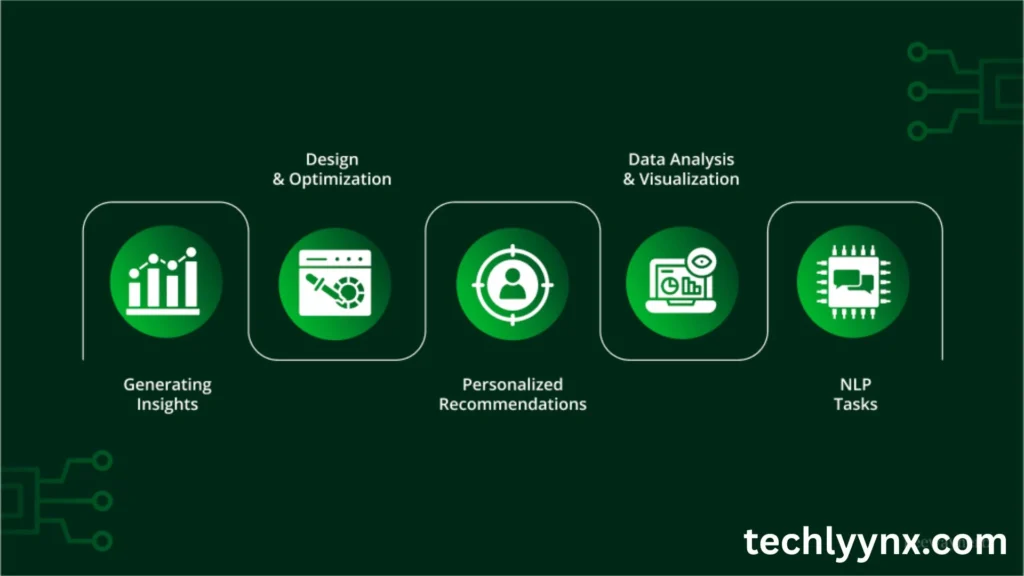
Machine learning models, particularly deep learning, are used in generative AI. One of the most potent models it employs is a transformer model, which gains knowledge from vast volumes of data.
Here’s a straightforward explanation of it:
Consider yourself a reader of hundreds of books written in a certain language. You’ll eventually begin to notice patterns in the way stories are constructed, how sentences are put together, and which words go together. Now picture a machine that does this, but with millions of films, books, songs, articles, and images.
The AI model may now “guess” what to say or generate next after learning such patterns. For instance:
It will utilize its training to come up with a story from scratch if you instruct it to “write a story about a dog who travels to space.”
It may create a fresh, realistic-looking house design if you submit images of dwellings.
Large datasets are used to train popular generative AI technologies. The AI learns from these datasets how individuals typically write, draw, talk, and construct things. The AI then creates new material based on that expertise.
What Are the Uses of Generative AI?
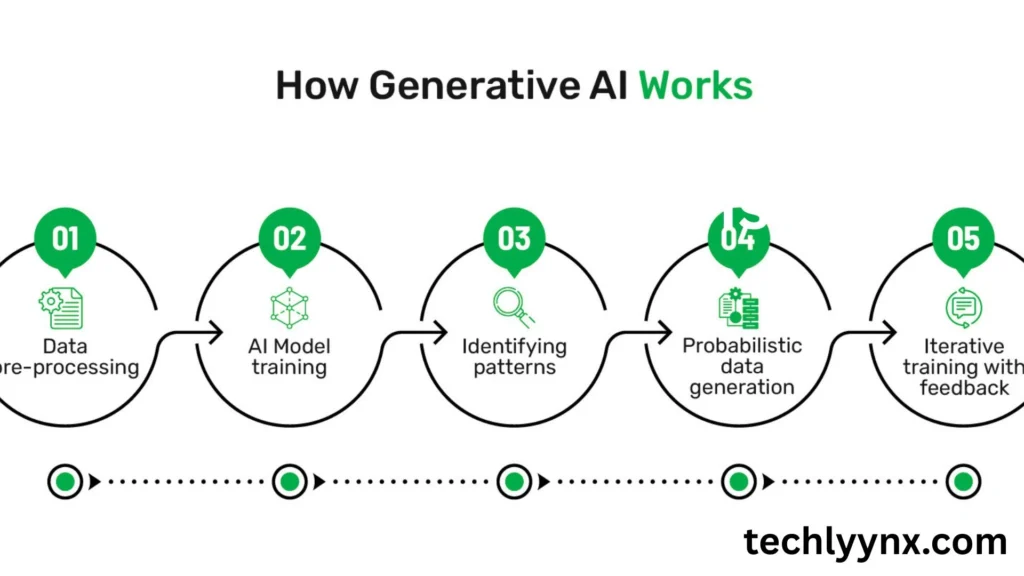
Generative AI is becoming an essential component of many companies, making it more than just a fun tool. Here are a few practical applications of it
a) Content Creation and Writing
Generative AI is used by writers and marketers to assist in creating product descriptions, blog entries, and social media content. It provides new ideas and saves time.
c) Design and Art
AI is being used by artists to produce 3D models, digital paintings, and logos. AI is now being used to create cinematic scenes and video game characters.
b) Medical Care
Generative AI is used in medicine to produce surgical planning, medication designs, and even medical imaging. It’s giving physicians new insights into complicated data.
d) Instruction
Generative AI is used by educators and learners to produce essays, develop study materials, and clarify ideas. It serves as a learning personal assistant.
e) Writing code
AI is used by software developers to produce code, identify errors, and offer better solutions. It decreases errors and expedites the development process.
f) Amusement
Generative AI is giving artists, filmmakers, and other creative new possibilities, from AI-generated tunes to full short films.
Benefits and Challenges of
Like any technology, generative AI has both good sides and some challenges. Let’s look at both.
Benefits:
Saves Time: It expedites workflows and automates creative chores.
- Encourages Creativity: It provides you with concepts you may not have considered.
- Accessibility: Provides individuals without technical expertise with creative tools.
- Personalization: Capable of producing unique information, including tailored advertising messages.
- Difficulties:
Accuracy Problems: Generative AI occasionally provides inaccurate or fabricated information, a phenomenon known as hallucinations. - Ethical Issues: It can be used to produce misinformation, deepfakes, and fake news.
- Data Bias: The result will be skewed if the training data is biased.
- Job Concerns: Some individuals fear that AI will supplant positions in customer service, design, and writing.
With the addition of guardrails, filters, and improved training data, developers are now making a concerted effort to lessen these issues.
The Future ….
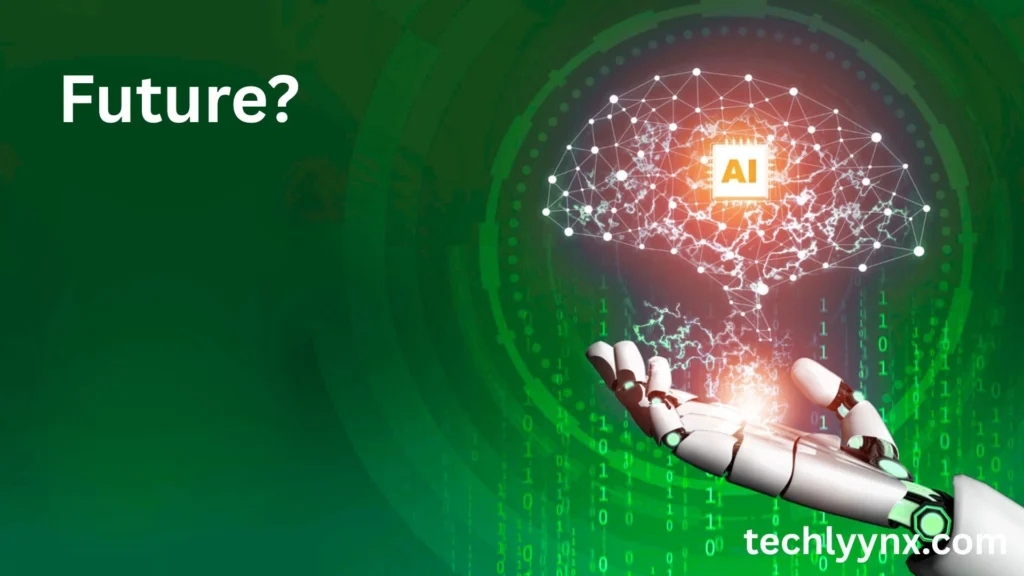
Generative AI is still growing fast, and its future looks exciting. In the next few years, we’ll likely see AI being used in almost every industry—from fashion to farming, from space travel to storytelling.
Here are a few trends to watch:
- Multimodal AI: AI that can understand and create across different types of content (like text, audio, images, and video all together).
- Voice and Emotion AI: AI that talks with emotion, understands your tone, and responds like a human.
- Smarter AI Assistants: Tools like ChatGPT will become more advanced and helpful, acting like digital teammates.
- Creative AI for All: People who don’t know how to code or design can still create apps, games, and products using AI tools.
Even though AI is powerful, it’s still just a tool. The best results happen when humans and AI work together—humans bring emotions, ethics, and real-world understanding, while AI brings speed, data, and ideas.
Conclusion
So, how can you define generative AI? Simply put, generative AI is a smart machine that can create new content like a human, using what it has learned from existing data. From writing and designing to helping doctors and engineers, it’s becoming a part of our everyday lives.
But with all its power, we must use it wisely. Generative AI is a tool—not a replacement for human creativity or responsibility. If used well, it can help us build a better, smarter, and more creative world.

